Projection apparatus Optical instrument for projecting still or moving images onto a surface
A projection apparatus is an optical instrument for projecting still or moving images onto a surface that is most often vertical, the screen. The projector-screen assembly is one of the so-called objective optical instruments.
⊙ Cinematographic projector
⊙ Slide projector
⊙ Video projector
⊙ Episcope (optics)
⊙ Overhead projector
⊙ pico Projector
The ancestors of projection devices are to look in the history of cinema:
⊙ The magic lantern, the ancestor of projection devices and especially the slide projector, appeared in China in the second century BC. AD ..
⊙ The kinesticope of the Austrian Franz von Uchatius in 1850, device that allowed to project disks.
⊙ The bioscope of Jules Duboscq in 1850.
⊙ The projection praxinoscope is an optical toy invented by Émile Reynaud in 1880.
⊙ The optical theater patented by Émile Reynaud in 1888.
⊙ The kinetoscope (sold under the trade name kinetoscope peep show machine, one of the first film visualization devices imagined by the American inventor Thomas Edison in 1888.
⊙ Vitascope, one of the first film projectors created in 1895 by Charles Francis Jenkins and Thomas Armat.
⊙ The cinematograph, device invented in 1895 by the Lumière brothers, both camera and cinema projector.
#PROJECTOR DESCRIPTION:
Cinematographic projection
Set of techniques used to render a movie
Help page on homonymy This article is mainly about traditional 35mm projection. For digital projection, see Digital Cinema.
Old door leading to the projection booth of a cinema
Philips Room Projector
Kinoton 35mm projector running in a movie theater
Cinematographic projection refers to all the techniques used to render a film, usually in a movie theater, but also for private screenings.
The film is in the form of a film on which images are printed; this film is called "copy". The video film is in the form of a magnetic tape or a digital medium (CD-ROM, DVD, hard disk ...), which includes coded images. These images are projected successively on the screen. Two phenomena give the illusion of seeing a continuous process:
⊙ retinal persistence, which masks blacks between images;
⊙ the phi effect: the brain interprets the succession of close images as a single image that changes.
Until the 2000s, the vast majority of cinemas used film support, which has the disadvantage of degrading over projections, and must be removed from time to time. This support, on the other hand, has the advantage of being universally widespread and standardized.
However, at that time, in the view of some, including George Lucas [1], the future was towards a projection "all digital": the operator receives a digital medium (or download the film), which reduces production and distribution costs (eliminating the cost of printing and the logistic management of copies), but increases the cost of projection (investment in new equipment evolving regularly to keep up with technical progress).
In the 2010s, digital projection becomes the majority in developed countries.
###Slide projector
A slide projector from the 1960s.
A slide projector is an optical instrument for viewing slides by projecting the image onto a large white surface (be it a wall or a suitable screen). If its use spread in the 1950s, the term "diapositif (ve)" appeared in 1892 in the French language with the magic lantern because the slide projector is the direct descendant by its operating principle and goals.
####Video projector
DLP InFocus IN34 projector.
A video projector is a projection device designed to reproduce a video source called video or computer, on a separate screen or on a white wall surface.
The term "video projection" is sometimes associated with the notion "frontal" to distinguish it from the rear projection. Thus, the overhead projector is a video display device or a large television set that uses a video projector, an optics and a semi-opaque or white screen.
Episcope (optics)
Help page on homonymy For homonymous articles, see episcope.
An episcope (epi Greek (on) and skopein (watch)) is an optical instrument for reflection projection (see also overhead projector). An epidiascope can also project the image of transparent objects, the ancient Greek διά (dia) meaning "through".
Episcope of the late nineteenth century.
Small model of episcope (plastic or bakelite), mid-twentieth century (1951), brand Dux Episkop
Some "episcopic" lighting microscopes are equipped with a device for observing opaque objects.
######Overhead projector
Overhead projector
The term overhead projector type TMAR designates three types of apparatus:
A type of television with a large screen and incorporating a video projector, an optical system for video overhead projection and mirrors. Notably because of the limitations of their display performance and their size, these devices appeared in the late 1970s are gradually abandoned in favor of flat-screen TV monitors and video projectors called "front" (from the English, front projection meaning projection of face).
The Spectacle (Who Looks On) is a device that allows you to project opaque images, such as books on a white screen or a wall surface.
The diascope (Who looks through, like the slides). As opposed to the previous one, this device requires to project documents made on transparent supports.
#######pico Projector
A pico projector seen from the front
Pico projector Aaxatech
A picoprojecteur is a miniaturized projector which can possibly be integrated into portable digital equipment (PDA, laptop, mobile phone, mobile TV receiver ...) [1].
The "pico projection" comes from the term pico, denoting a prefix of the International System of Units, representing {\ displaystyle 10 ^ {- 12}} 10 ^ {- 12} times a unit (one millionth of a millionth).
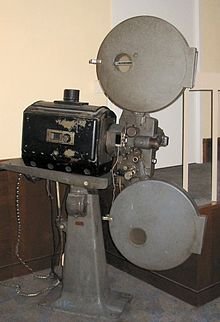
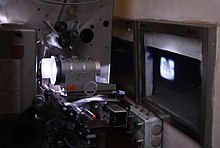
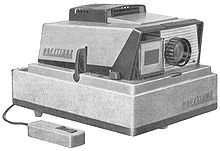
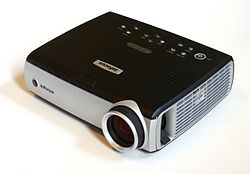
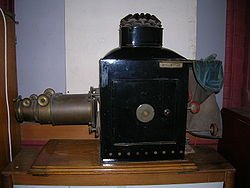


Nice post
Thank u ...
Good post
wow ! great information !